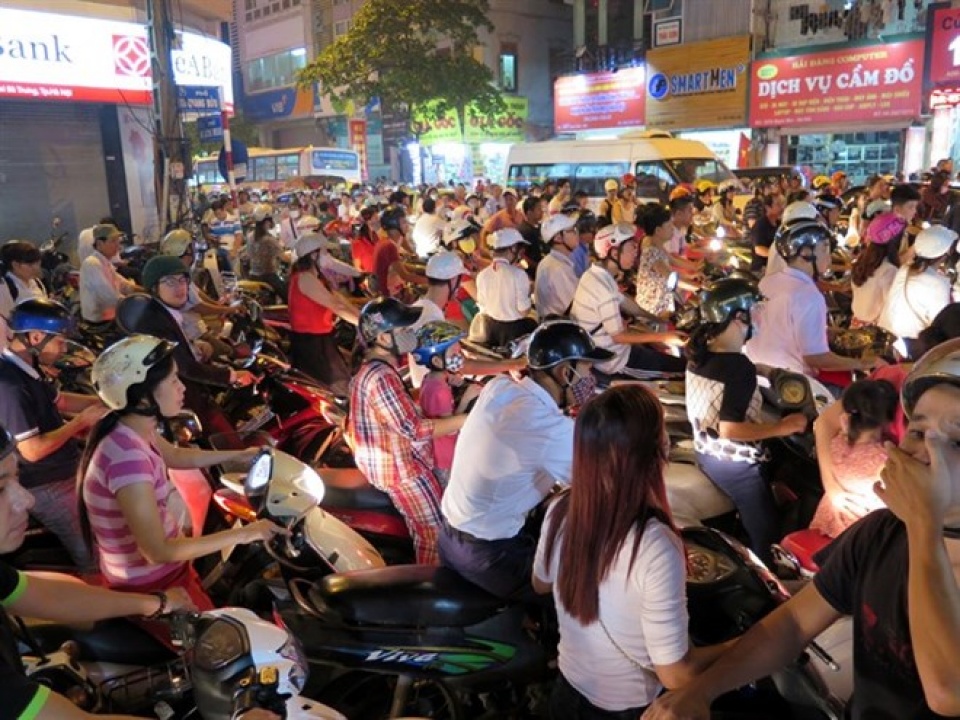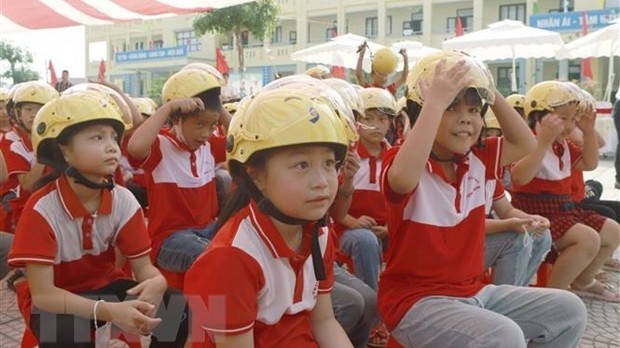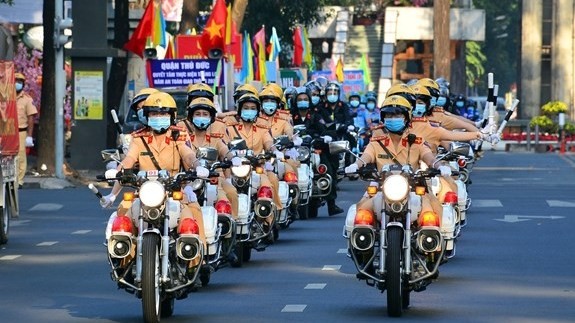
More pedestrian-only streets coming in Ha Noi
Latest
| TIN LIÊN QUAN | |
| Hanoi investment conference brings in trillions of VND | |
| Ha Noi’s luxury hotels fully booked by Q1, 2018 | |
The plan aims to “lessen public dependency” on private vehicles, especially motorbikes, said Vu Van Vien, head of the municipal department of transportation.
He revealed the information at a recent workshop on traffic safety which was organised by the National Traffic Safety Committee and the Republic of Korea’s Ministry of Land, Infrastructure and Transport.
 |
| Traffic congestion at the Ta Quang Buu - Bach Mai junction in Ha Noi. (Photo: VNA) |
Propelled by the success of the walking streets around Hoan Kiem Lake, considered the heart of the capital city, replication of this model is just one of an array of measures that city authorities are considering in an ambitious attempt to stop the use of motorbikes altogether.
According to the transport director, some countries in the region implemented a five to ten-year roadmap to purge inner cities of the (hitherto) ubiquitous presence of motorbikes. In the case of Vietnam, and Ha Noi in particular, the department deems that a 13-year roadmap (towards 2030) is appropriate, during which period public transport will be developed.
Currently, Ha Noi’s traffic infrastructure cannot cope with the pressure of the swelling number of private vehicles, while Ha Noi’s bus system can handle only 14-15 percent of people’s demand for transportation.
Responding to the concerns, Mr. Vien said measures are being taken to improve the rate to 20-25 percent by the end of 2020, and to 35-40 percent in 2030. He added that buses are expected to be the main means of transport in inner city areas, being capable of handling 50-55 percent of public demand.
“In the near future, on certain routes and areas, private vehicles will be denied entry or at least limited, especially on routes backed by good public transportation,” Mr. Vien said.
Khuat Viet Hung, deputy head of the National Traffic Safety Committee, said Vietnam has received a lot of international support in crafting the urban development master plan, however “a provincial-level master plan for traffic safety in line with international practice has not received much attention.”
Mr. Hung added that if Ha Noi’s traffic safety master plan proves successful, projects and measures implemented under the plan will be incorporated into the development strategy for other centrally-directed cities and provinces in the future.
Dr Changhwan Mo, director of the Division of Mass Transit & Transport Administration in the Korea Transport Institute, said the capital city Seoul had faced the problems that Ha Noi is now struggling with. Seoul initially addressed them by expanding its road system, however, the method was not very successful and the city switched to focusing on public transportation and better management in order to reduce congestion and accidents.
Other representatives from the Korea Transport Institute and Korea Institute of Civil Engineering and Building Technology also shared their experience in reducing the mortality rate of children in traffic accidents. Seoul’s master plan for traffic safety was also discussed for possible lessons applicable to Ha Noi.
 | Party chief updates Ha Noi voters on NA session’s outcomes Party General Secretary Nguyen Phu Trong and other National Assembly (NA) deputies of Ha Noi met with voters in Hai Ba Trung and Dong Da ... |
 | Ha Noi’s six-month tourism rakes in 1.54 billion USD Ha Noi welcomed nearly 12 million tourists in the last two quarters, earning 35 trillion VND (about 1.54 billion USD), representing year-on-year increases of 8 ... |
 | Ha Noi values contributions of news agencies Ha Noi authorities had a meeting with representatives from central-level and Ha Noi news agencies on June 17 on the occasion of the 92th anniversary ... |




















